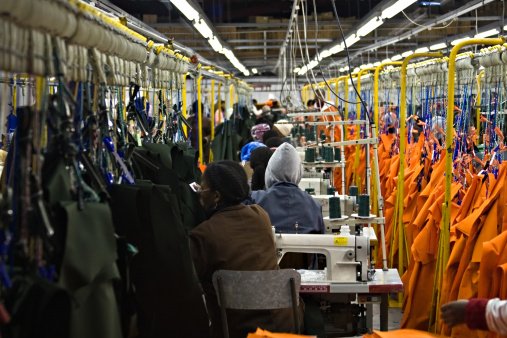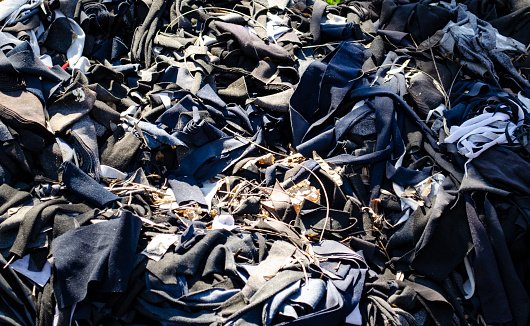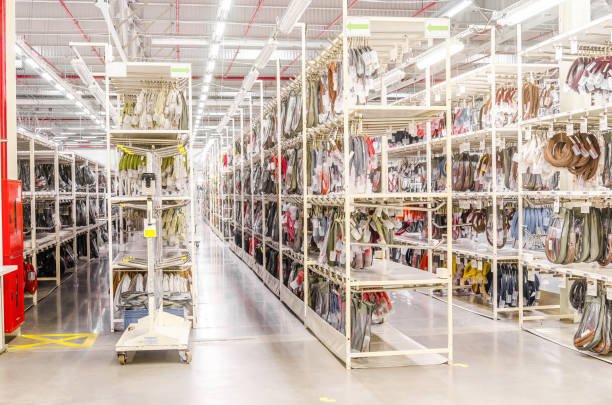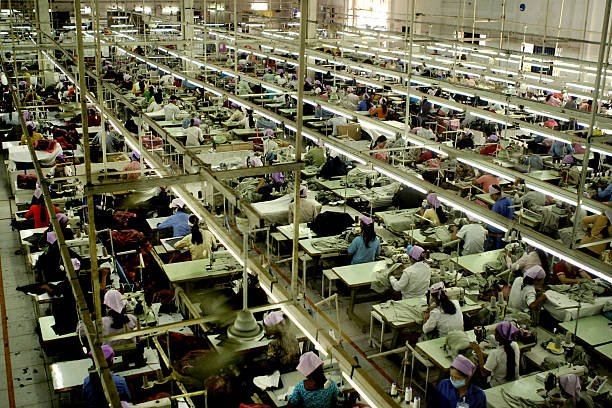The True Cost of Fast Fashion: Its Environmental and Social Impact

The phrase "Fast fashion" has gained popularity during the past several years. It alludes to a commercial strategy in which clothes producers create and market affordable garments that are quickly replaced by fresh styles. Although fast fashion has emerged as a significant trend in the business, its negative effects on the environment and society are becoming more and more obvious. We will look at the price of fast fashion and its effects on the environment in this post.

What is Fast Fashion?
A business model known as "fast fashion" is centered on producing tons of inexpensive apparel that soon goes out of style. The aim of fast fashion firms is to sell as many items as possible, thus they frequently create clothing lines in reaction to the newest fashion trends. These companies use low-cost labor and resources to make garments rapidly and affordably.
Cheap textiles, mass production, and quick style changes are traits of fast fashion. Every few weeks, brands will frequently introduce new models in an effort to tempt customers to acquire the newest styles. There is a continuous cycle of buying and discarding because the garments are typically designed to be worn for a few months before being changed with new trends.
Fast fashion companies include H&M, Zara, and Forever 21 as examples. These companies are renowned for creating inexpensive apparel that is intended to be worn only briefly before being thrown away.
The Cost of Fast Fashion
There are significant costs associated with fast fashion for the environment and for society at large. Fast fashion has a huge negative impact on the environment since it uses a lot of resources to produce apparel and produces a lot of garbage. Socially, fast fashion has come under fire for its use of child labor and detrimental effects on regional economy.

Environmental Impact of Fast Fashion
Fast fashion has a severe negative influence on the environment. Large amounts of resources, including raw materials, energy, and water, are needed for the creation of clothes. One of the most popular materials used to make clothing is cotton, which requires a lot of water to grow. One kilogram of cotton, which is sufficient to make one t-shirt and two pairs of jeans, can require nearly 20,000 liters of water to produce, according to the World Wildlife Fund.
Significant pollutants and waste are also produced throughout the clothes manufacturing process. Toxic chemicals that are utilized in the dyeing and finishing steps needed to color and treat clothes may leak into the environment, endangering both people and wildlife. Also, there is a lot of garbage produced while disposing of garments. According to the Ellen MacArthur Foundation, one garbage truck's worth of textiles are burned or landfilled every single second.
Fast fashion adds to climate change in addition to the resource use and pollution involved in the production of apparel. Global clothes shipping generates a considerable amount of greenhouse gas emissions. Almost 10% of the world's carbon emissions, according to the UN, are caused by the fashion industry.

Social Impact of Fast Fashion
Fast fashion also has a huge social influence. Fast fashion companies have a reputation for abusing workers in poor nations, where pay is frequently inadequate and working conditions are hazardous. Workers may be required to work lengthy shifts without breaks in some circumstances, and overtime pay may not always be provided. There have been several examples of child labor and forced labor used in the manufacturing of apparel for fast fashion firms.
Another issue is the harm that fast fashion does to regional economies. Fast fashion companies frequently outsource their manufacturing to poorer nations where they can benefit from cheap labor. Local textile industry may suffer as a result since they can't compete with quick fashion retailers' low prices. In extreme instances, the local textile industry is entirely decimated, leaving workers jobless and local economies in ruins.
Economic Impact of Fast Fashion
Furthermore important is how fast fashion affects the economy. While fast fashion companies may provide consumers with affordable apparel, the true cost of this goods is borne by others. Fast fashion companies offer low pricing because they slash costs in areas like labor and materials, which may be harmful to both the environment and people.
Fast fashion has a detrimental effect on local economies, which is one of its key economic effects. Local textile industry may suffer if apparel manufacturing is outsourced to developing nations. These sectors frequently struggle to compete with fast fashion brands' low costs, which can result in a fall in local manufacturing jobs and a reduction in local workers' incomes. This may have a negative impact on other businesses in the area as workers may have less money to spend on goods and services.
Also, the apparel from fast fashion brands is made to be worn for only a few months before being thrown out. This leads to a never-ending cycle of consumption that can be harmful to the environment and consumer wallets. Fast fashion may appear affordable at first, but the expense of replacing items frequently can pile up over time.

Alternatives to Fast Fashion
Although there are many drawbacks to fast fashion, customers can also consider other options. For instance, the fashion sector is seeing a rise in the sustainable fashion movement, which emphasizes the creation of ethically and environmentally responsible clothes. Fair labor standards are given top priority by sustainable fashion businesses, who employ materials that are supplied responsibly.
Another option to fast fashion is used clothing. Purchasing used clothing can extend the usefulness of current clothing and assist lower the need for new apparel. This might be a more economical approach to assemble a wardrobe as well as assist lessen the environmental impact of clothes production.
Another option to fast fashion is ethical and fair trade clothing. Fair labor standards, giving employees a fair salary, and providing secure working conditions are priorities for ethical and fair trade fashion firms. These companies frequently collaborate with regional groups to produce apparel, which benefits local economies and generates employment.
Fast fashion is an important trend in the fashion business, however it has a negative effect on the environment and society. Large amounts of resources are needed for clothing production, which also generates a lot of trash. Concerns about fast fashion also include the exploitation of workers and the harm it does to regional economies.
Consumers can seek alternate options to fast fashion, though. Alternatives that can lessen the negative effects that clothing production has on the environment and society include secondhand clothing, ethical and fair trade fashion, and sustainable fashion. Customers can lessen the detrimental effects of rapid fashion on the environment and society by making more environmentally friendly choices when making their fashion purchases.
Posted Using LeoFinance Beta
Congratulations @lefa! You have completed the following achievement on the Hive blockchain And have been rewarded with New badge(s)
Your next target is to reach 500 upvotes.
You can view your badges on your board and compare yourself to others in the Ranking
If you no longer want to receive notifications, reply to this comment with the word
STOPCheck out our last posts:
Support the HiveBuzz project. Vote for our proposal!
Yey!